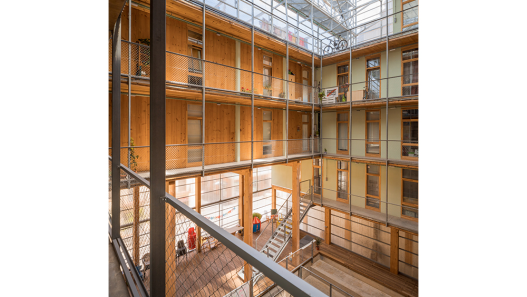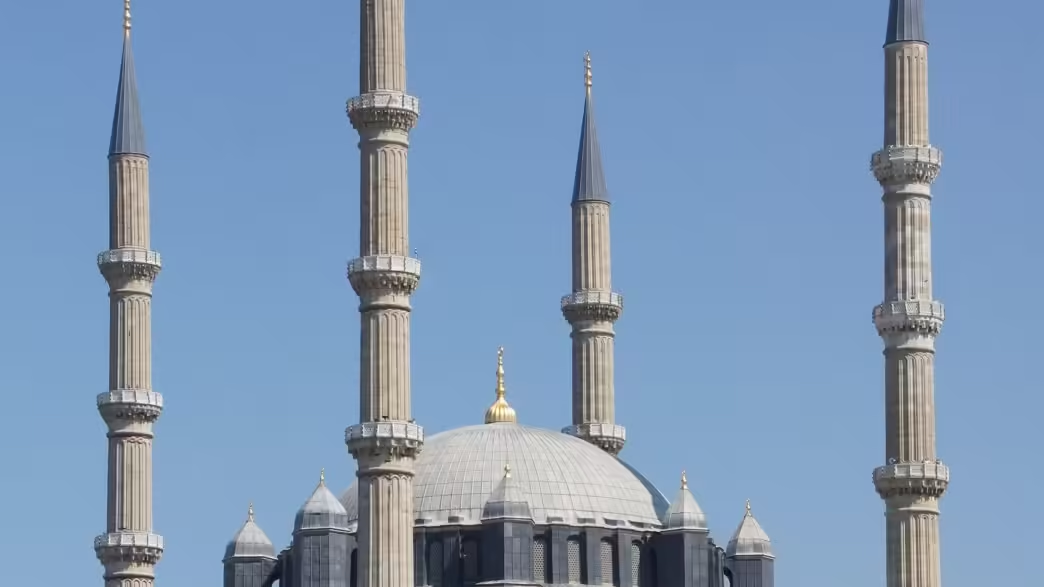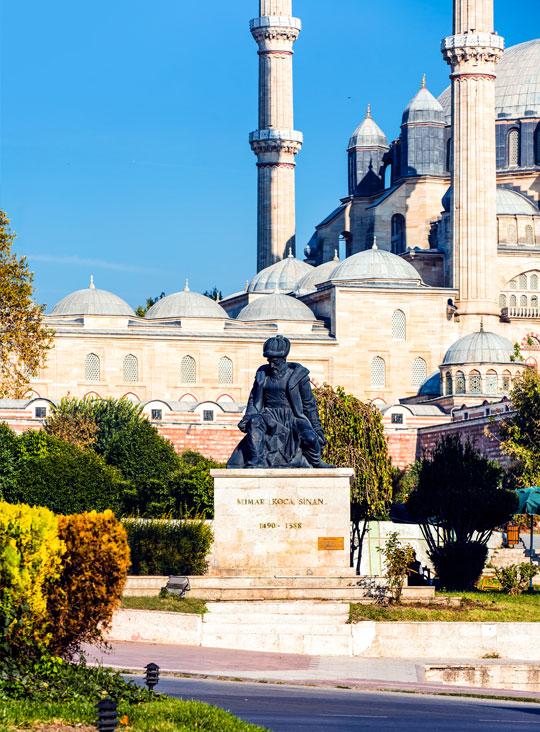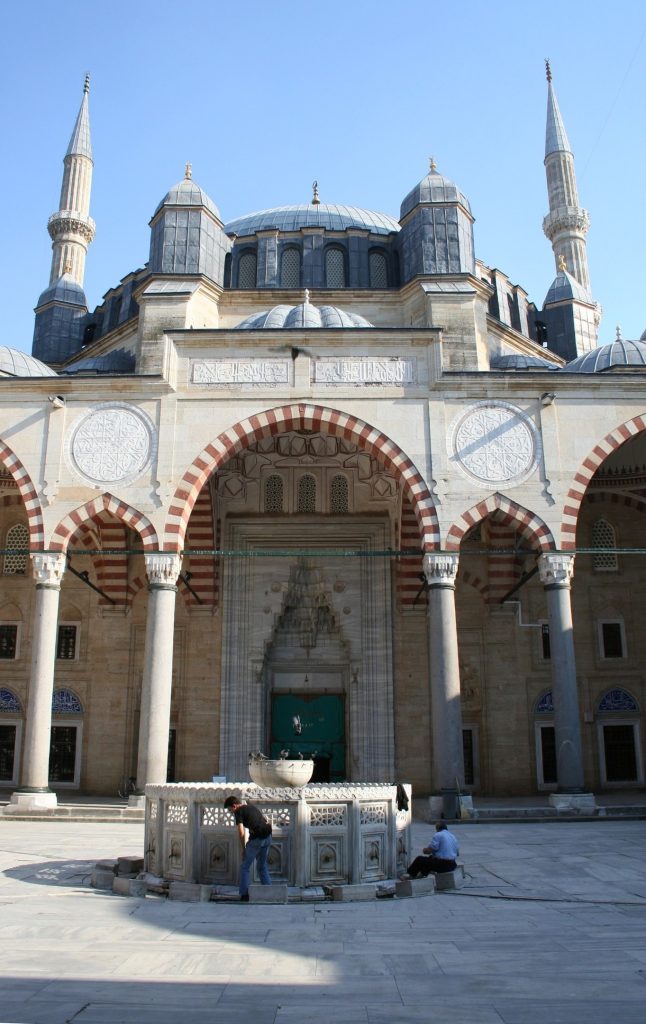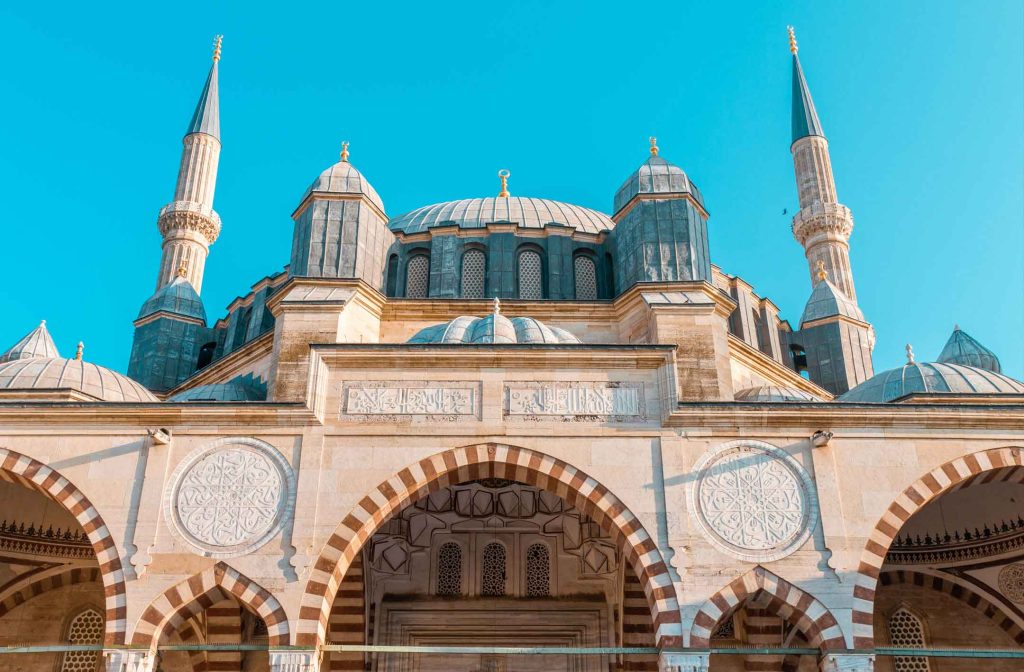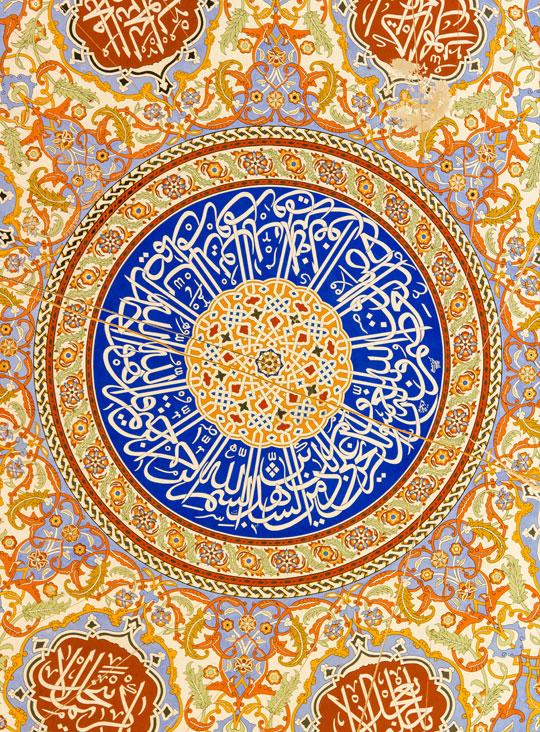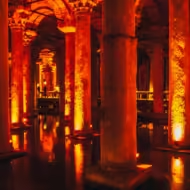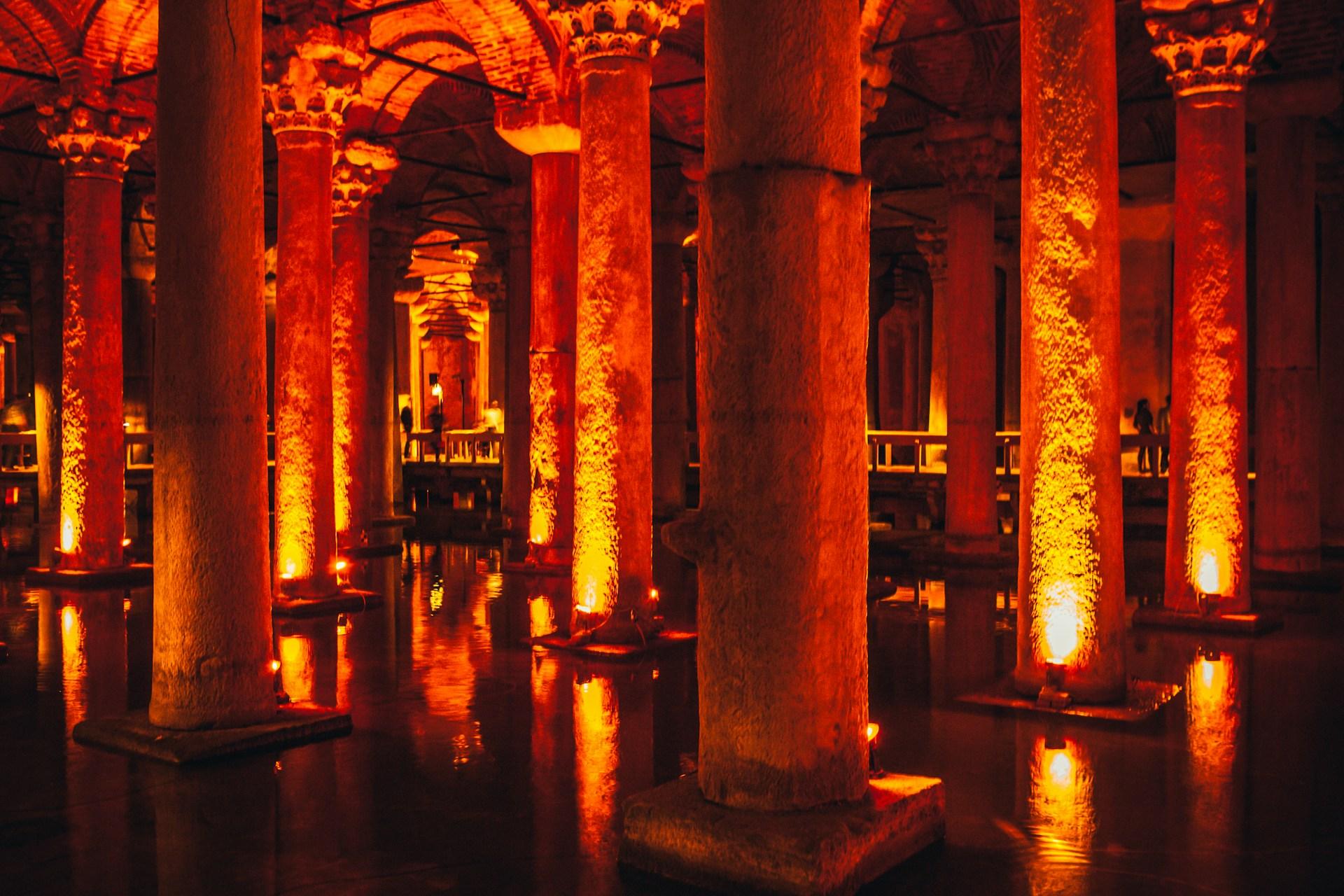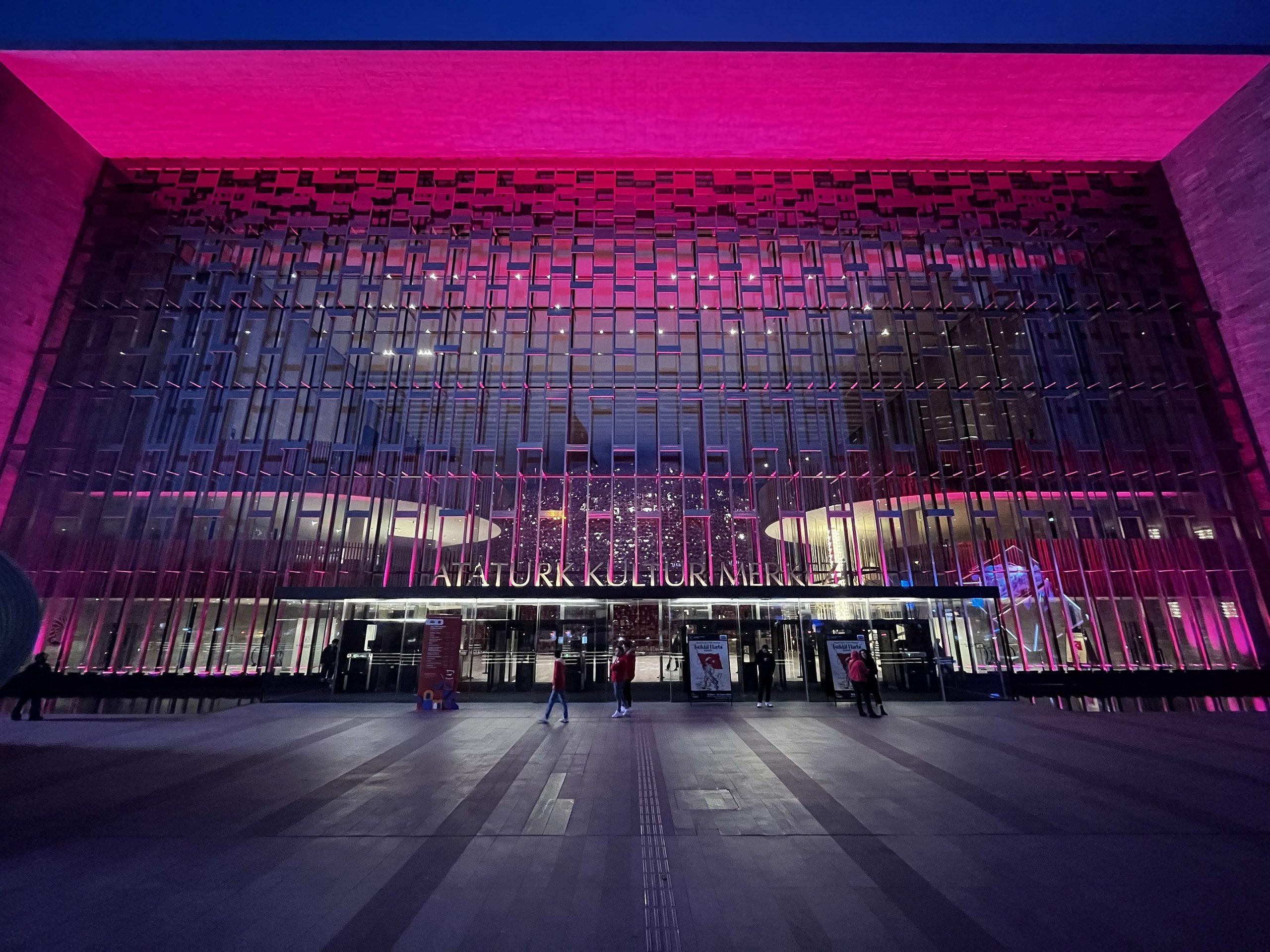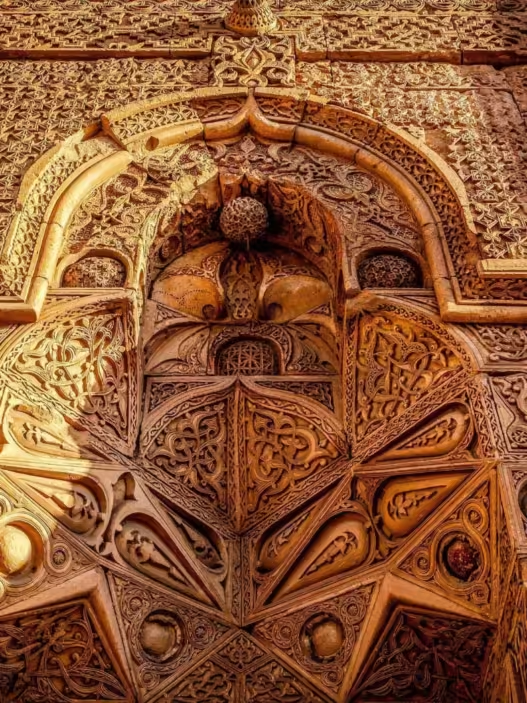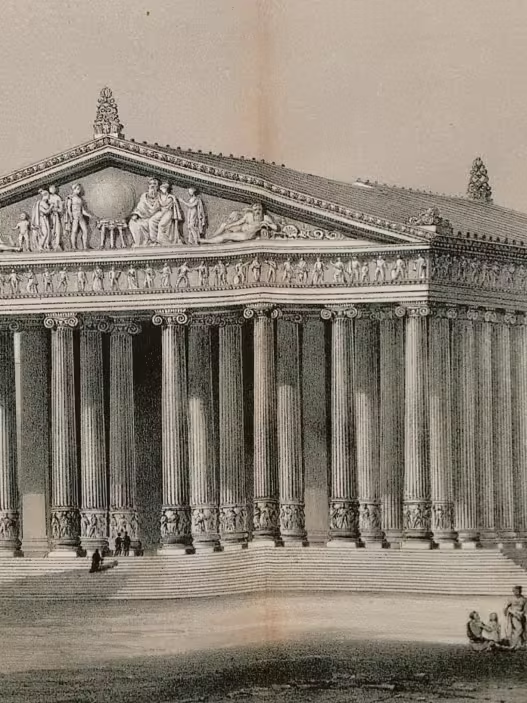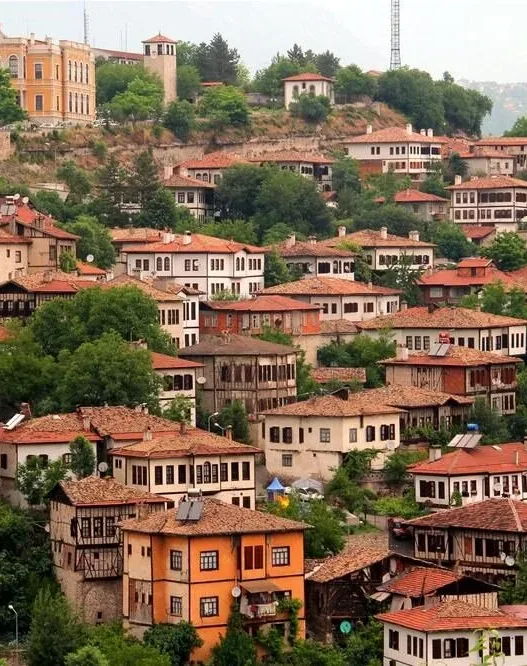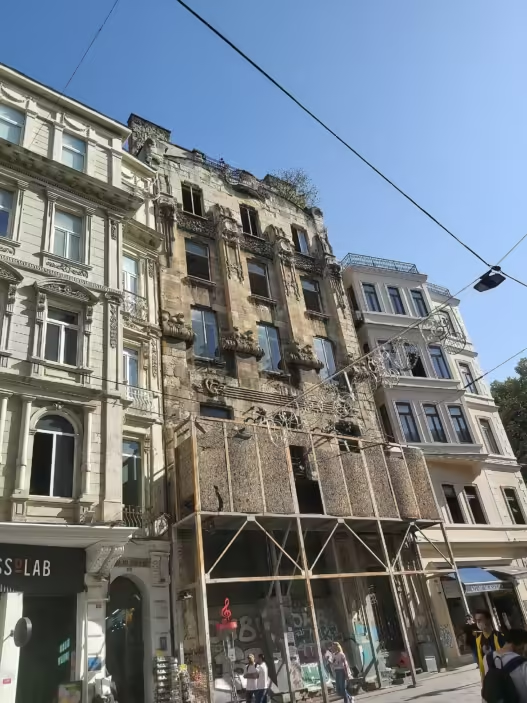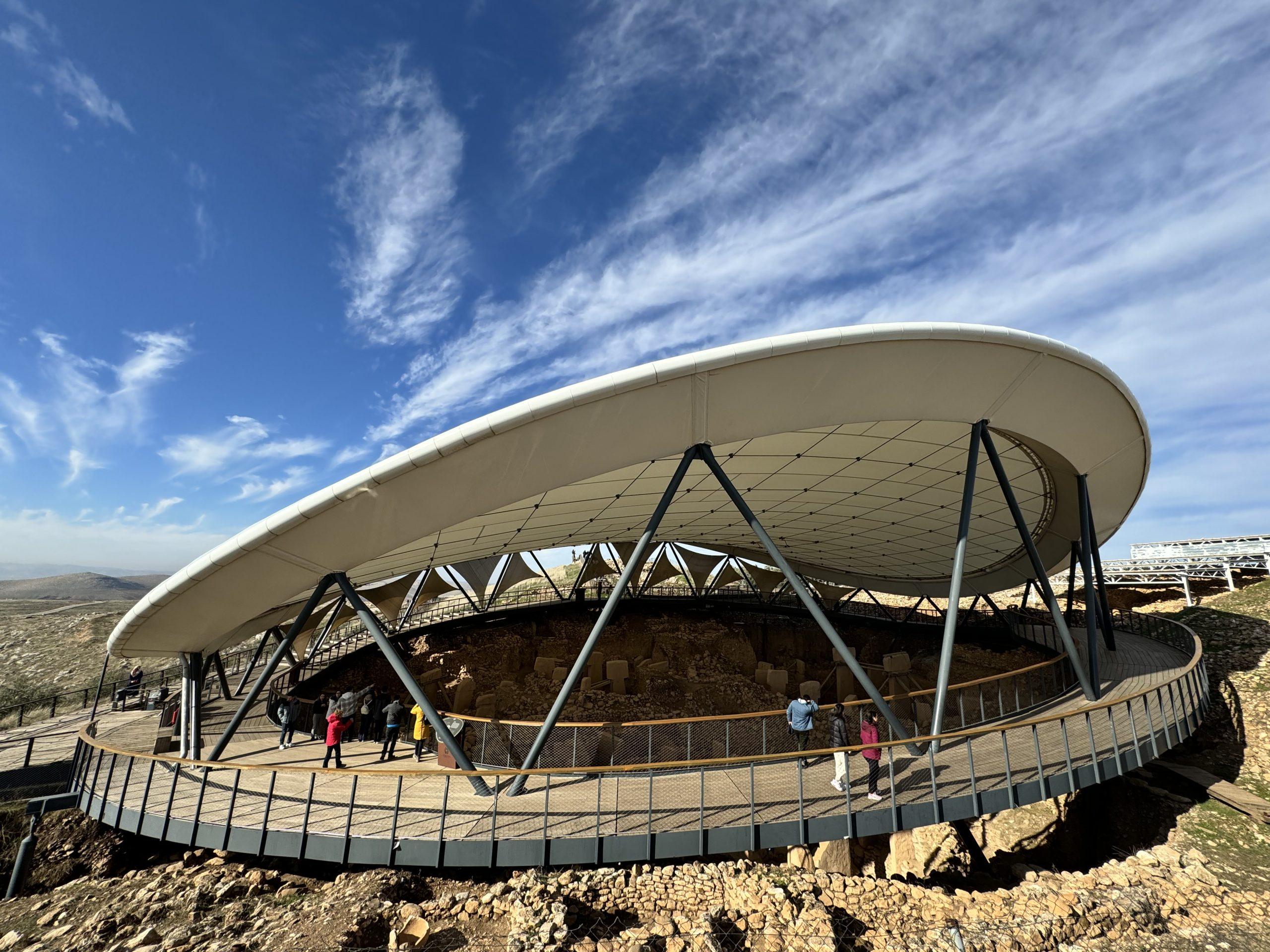Selimiye Mosque is a mesmerizing structure dominating the Edirne skyline as one of the largest mosques of the Ottoman Empire. The pinnacle of Mimar Sinan’s mastery, it is recognized worldwide for both its architectural excellence and cultural significance.
One of the finest examples of traditional Ottoman architecture, the Selimiye Mosque was built in the 16th century on the orders of Suleiman the Magnificent. The design of the mosque is an example of Mimar Sinan’s achievement, surpassing the technical and aesthetic standards of his time. With its towering dome, exquisitely crafted minarets and magnificent interior decoration, the Selimiye Mosque invites its visitors to an impressive spiritual experience.
However, the Selimiye Mosque is not only an architectural masterpiece, but also a symbol of the power and artistry of the Ottoman Empire. This mosque, which occupies an important place in the historical fabric of Edirne, is both a place of religious worship and a magnificent example of art and architecture.
Let’s take a closer look at this magnificent structure and discover the place of Selimiye Mosque in Edirne’s cultural heritage.

Mimar Sinan is one of the most famous and influential architects of the Ottoman Empire. Selimiye Mosque is one of his most important works and is considered one of the most important examples of Ottoman architecture. This mosque was built in the 16th century and dazzles with its architectural features and details.
Selimiye Mosque dominates the skyline of the city and attracts attention with its majestic dome. The decorations, columns and arches inside the mosque reflect Mimar Sinan’s aesthetic sense. The details on the dome and the elegant designs of the minarets mark the peak of Ottoman architecture.
16th Century Ottoman Architecture
The architectural style of the Ottoman Empire in the 16th century witnessed a fascinating and glamorous period. Among the important works built during this period is the Selimiye Mosque. Selimiye Mosque was built byMimar Sinan in Edirne between 1569 and 1575 on behalf of Buşra Sultan.
16th century Ottoman architecture is remarkable in terms of aesthetics and functionality. Selimiye Mosque is one of the best examples of the architectural style of this period. The architectural features of the mosque are designed in perfect balance and harmony.



Mimar Sinan’ın Selimiye Camii için kullandığı geometrik şekiller ve düzgün hatlar, Osmanlı mimarisindeki estetik anlayışı yansıtır. Caminin çizgileri ve detayları, 16. yüzyıl Osmanlı mimarisinin zenginlik ve zarafetini gözler önüne serer.
Selimiye Camii’nin mimari özellikleri şunlardır
- Perfect proportion and symmetry
- A large main dome and side domes
- Finely embroidered mihrab and pulpit
- Altar wall with superior acoustic properties
- Harmony of indoor and outdoor spaces
16th century Ottoman architecture experienced its heyday with the Selimiye Mosque. The buildings built in this period are unique works that reflect the power and aesthetic understanding of the Ottoman Empire.
Selimiye Mosque History
The Selimiye Mosque is one of the most important mosques of the Ottoman Empire and one of the last surviving great works of Mimar Sinan. Built in 1575 in Edirne, this mosque was built at the request of Prince Selim.
Sinan the Architect took great care in the construction of the Selimiye Mosque and included unique details in the architectural design of the mosque. It is known that the construction of the mosque took about a decade and when it was completed, it was considered a great achievement.
The construction date of the Selimiye Mosque sheds light on the period of the Ottoman Empire in the 16th century. During this period, the Ottoman Empire became a great power and made great progress in the fields of art, literature, science and architecture. Mimar Sinan’s works also emerged during this period and are one of the best examples of the perfectionist architectural style of the Ottoman Empire.

Mimar Sinan is considered one of the most important architects of the Ottoman Empire and the Selimiye Mosque is just one example of his achievement. Sinan the Architect displayed a superior aesthetic and technical skill in his works and made great contributions to the development of Ottoman architecture. The Selimiye Mosque is a work that best reflects the artistic talents and architectural genius of Mimar Sinan.
“The construction date of the Selimiye Mosque represents the architectural and cultural peak of the Ottoman Empire. Mimar Sinan’s aesthetic sense and perfectionist approach can be seen in every detail of this mosque.”
Mimar Sinan’s other works include important structures such as the Süleymaniye Mosque, Şehzade Mosque and Rüstem Paşa Mosque. These works are considered to be the best examples of Ottoman architecture and have gained worldwide fame. Mimar Sinan’s mastery of large projects such as the Selimiye Mosque has made him one of the most important architects in history.
Selimiye Mosque Features
The Selimiye Mosque is a great masterpiece of Ottoman architecture. In this section, we will examine its architectural features in detail. Some of the prominent features of Selimiye Mosque are as follows:
Central Location
The Selimiye Mosque is located on a high hill in Edirne, in the center of the city. This location has allowed the mosque to rise in a powerful and majestic way. The mosque is an impressive landmark and has become a symbol of Edirne.
Mimar Sinan’s Artistic Talent
The architectural design of the Selimiye Mosque reflects the mastery and artistic talent of Mimar Sinan. The dome, minarets and interior arrangement of the mosque are considered to be one of the most important works of Mimar Sinan in his time. These architectural features give the mosque an aesthetic elegance and meaning.
Spacious Interior Spaces
The interior of the Selimiye Mosque has a large and spacious structure. The main hall of the mosque attracts attention with its high dome and large courtyard. The columns and decorations in the interior allow the mosque to create an elegant and impressive atmosphere.
Detailed Embroidery Workmanship
The walls and domes of the Selimiye Mosque are decorated with detailed and finely crafted embroidery. These embroideries reflect the artistic value of the mosque and the pinnacle of Ottoman handicrafts. The decorations inside the mosque offer visitors a mesmerizing visual experience.
Harmonic Exterior
The exterior appearance of the Selimiye Mosque has been carefully considered and harmoniously designed. The minarets of the mosque and the surrounding buildings together form a harmonic unity. This unity makes the Selimiye Mosque aesthetically attractive and impressive.






Technical Inventions Unique to the Mosque
In the construction of the Selimiye Mosque, various inventions were used that pushed the technological and engineering limits of the period. The method called “four elephant legs” supporting the dome of the mosque is an example of Mimar Sinan’s innovative approach. These technical inventions increased the strength and durability of the mosque.
| Mimar Sinan’s Inventions in Selimiye Mosque | Description |
|---|---|
| Four Elephant Feet | An innovative way of strengthening the structural system of the dome. |
| High Windows | High windows that expand the interior and increase lighting. |
| Trumpets | A raised half-dome structure used to support the dome. |
| Interior Columns | Columns that shape the spacious interior and provide an aesthetic touch. |
These features make Selimiye Mosque a magnificent and impressive structure. When you visit the mosque, you can closely observe these details and step into the fascinating world of Ottoman-era architecture.
Selimiye Mosque Plan
By studying the plan of the Selimiye Mosque, we will discover the genius of Sinan the Architect in project design.
The plan of the Selimiye Mosque reveals a carefully thought out and perfectly balanced structure by Mimar Sinan. The main plan of the mosque bears the basic characteristics of a classical Ottoman mosque. The square-shaped courtyard is complemented by mosque-specific minarets and a dome.
This plan has a unique design feature that stands out in Mimar Sinan’s other works. The plan of the Selimiye Mosque includes a central area surrounded by a main dome and four half domes. This design creates an impressive expansion of the volume inside the mosque and directs light into the interior.






Sinan the Architect designed the plan of the Selimiye Mosque taking into account regional and geographical factors. The mosque was carefully positioned to harmonize with the existing terrain in Edirne and make the best use of its surroundings. Thus, the mosque benefits from both views and light.
| Architectural Features | Description |
|---|---|
| Central Dome | The central dome of the Selimiye Mosque, one of Mimar Sinan’s largest dome designs, is one of the most impressive elements of the mosque. It expands the volume inside and creates a striking silhouette. |
| Minarets | The four minarets of the Selimiye Mosque have a more slender and elegant design than other mosques in Ottoman architecture. These minarets contribute to the overall symmetry of the mosque and offer a striking appearance. |
| Courtyard | The Selimiye Mosque is characterized by a square-shaped courtyard seen in traditional Ottoman mosques. This courtyard brings together the interior and exterior areas of the mosque and regulates the entrance to the prayer area. |
Mimar Sinan’s mastery of project design is evident in the details and architectural features of the plan of the Selimiye Mosque. By emphasizing the aesthetic and functional integrity of the mosque, this plan impressively displays Mimar Sinan’s architectural genius.
Dome Details
The Selimiye Mosque is one of the most important examples of Ottoman architecture and is unique in its dome details. Mimar Sinan’s mastery and perfectionism are magnificently revealed in the dome of this mosque.
The details on the dome are one of the elements that distinguish the Selimiye Mosque from other similar mosques. It is full of elaborate pen work, original mosaics and elegant geometric patterns. These details add depth to the mosque’s interior, while at the same time captivating the eye.
“The dome of the Selimiye Mosque is one of the most magnificent structures of Ottoman architecture. The delicacy of the details reflects Mimar Sinan’s mastery and aesthetic understanding.”






The pendants under the dome reinforce the mosque’s overall sense of symmetry and balance. These carefully designed pendants carry the weight of the dome while at the same time being a work of art.
This detailed and magnificent dome is one of the most distinctive features of the Selimiye Mosque and gives it a unique character.
| Feature | Description |
|---|---|
| Pen Works | The detailed and delicately crafted pen works on the dome increase the aesthetic value of the mosque. |
| Mosaics | The mosaics on the inner surface of the dome emphasize the richness and splendor of the mosque. |
| Pendants | The pendants under the dome reinforce the balance and symmetry of the mosque. |
| Geometric Patterns | Geometric patterns give the dome an aesthetically fascinating appearance. |
Minaret Architecture
The minarets of Selimiye Mosque have an important place in Ottoman architecture. In this section, we will give information about the features of the minarets in this magnificent building and their place in Ottoman architecture. The minarets of the Selimiye Mosque are an indication of Mimar Sinan’s genius and offer a fascinating aesthetic.
Minaret Features
The minarets of the Selimiye Mosque are one of the important elements of Ottoman architecture. Here are some remarkable features of the minarets in this building:
- The great minaret The tallest and most magnificent minaret of the Selimiye Mosque stands out with a height of 85 meters. This minaret surpasses other mosque minarets.
- Octagonal plan The minarets have an octagonal plan and were built using stone on the lower parts and brick on the upper parts. This design stands out as a unique feature in Ottoman architecture.
- Minarets have balconies: The minarets have balconies. There are many stairs leading up between the balconies, offering visitors spectacular views of the mosque’s surroundings.
- Tulip motifs: The decorations on the minarets are characterized by tulip motifs, an important symbol of the Ottoman period. These motifs increase the aesthetic value of the minarets and create a dazzling appearance.
The minarets of the Selimiye Mosque are one of the most magnificent examples of Ottoman architecture. This structure allows us to admire the mastery of Mimar Sinan and represents a great legacy in Turkish history.
| Minaret Features | Description |
|---|---|
| Height | 85 meters |
| Plan | Octagon |
| Material | Stone and brick |
| Cheers | Yes |
| Decorations | Tulip motifs |
Conclusion
Selimiye Mosque, as one of the most important architectural monuments of the Ottoman period, has shaped the skyline and cultural fabric of Edirne. This review will discuss the architectural features, historical significance and cultural impact of the mosque and present a concluding chapter.
The Selimiye Mosque was built by Mimar Sinan in the 16th century and is considered one of the most outstanding examples of Ottoman architecture. An important milestone in Islamic art, it represents the pinnacle of classical Ottoman style. It attracts attention with its domes, minarets and interior details.
The historical significance of this mosque cannot be ignored. It was built on the orders of Sultan Selim II and reflects the power and wealth of the Ottoman Empire. Moreover, the mosque’s location in the center of Edirne emphasizes the historical and cultural importance of the city.
The Selimiye Mosque also has a great cultural impact. As an important symbol of the Islamic world and Ottoman architecture, it attracts tourists and researchers. It also has the potential to become a center for the preservation and development of the historical fabric around the mosque.
Frequently Asked Questions
What are the architectural features of Selimiye Mosque?
Selimiye Mosque is considered to be the masterpiece of Mimar Sinan. Important architectural features of the mosque include a large dome, four minarets, a fountain, porticoes and various decorations. Elements such as dome details, minaret architecture and the plan of the mosque also attract attention.
What is the construction date of Selimiye Mosque?
Selimiye Mosque was built by Mimar Sinan in the 16th century. The construction process started in 1568 and was completed in 1575.
What is the significance of the Selimiye Mosque?
The Selimiye Mosque is considered an important landmark of the Ottoman Empire and is among the greatest works of Mimar Sinan. The mosque represents the architectural style of the period and is one of the best examples of Ottoman architecture.
Where can I find photos of Selimiye Mosque?
You can find photos of Selimiye Mosque in many sources on the internet. Sources such as the mosque’s official website, tourist websites and travel blogs offer beautiful images of the Selimiye Mosque.
What is the plan of the Selimiye Mosque?
The plan of the Selimiye Mosque has a four-legged structure. The mosque has an arrangement that includes porticoes, a fountain and an inner courtyard around the main worship area. This plan is an indication of the detailed thinking in Mimar Sinan’s design.
What are the dome details of the Selimiye Mosque?
The dome of the Selimiye Mosque is a great work of art. The inner and outer surfaces of the dome are decorated with various ornaments. Brickwork and various motifs were used on the inside of the dome. Tiles and ceramics in various colors were used on the outside.
What are the features of the minarets of Selimiye Mosque?
Selimiye Mosque has four minarets. The minarets are located symmetrically around the mosque. They are built in a style similar to Ottoman minarets and harmonize with the overall architectural composition of the Selimiye Mosque.
What are the results and highlights of the Selimiye Mosque?
The Selimiye Mosque is an important work that demonstrates the skills of Mimar Sinan and the architectural capabilities of the Ottoman Empire during his time. The mosque is a popular tourist attraction in Turkey and around the world, visited by tourists and history buffs. Selimiye Mosque is considered one of the most important examples of Ottoman architecture.
My Thoughts About Selimiye Mosque
Selimiye Mosque is a building of historical and cultural value, built during one of the most important periods of the Ottoman Empire. One of the symbols of Edirne, this magnificent mosque mesmerizes people with its architectural elegance and aesthetics and has played an important role throughout history.
With its tile decorations, marble workmanship and the height of its dome, this holy place, where hundreds of people worship every day, reflects the deep influence of Islam on the city.
It is important to note that the Selimiye Mosque is not just a place of worship; built after the conquest of Istanbul, it reflects the power and wealth of the Ottoman Empire and made a significant contribution to the social and religious life of the city.
What do you think about the restoration and preservation of the Selimiye Mosque? How do you think the efforts to revitalize this historical building balance modernity with preserving the traces of the past? How does the restoration of the Selimiye Mosque interact with today’s technology and architectural understanding? What impact does the restoration process and its results have on social memory and history? How is this important landmark evaluated as a cultural and architectural heritage from the past to the present?
If you haven’t read it yet, you can check out our review of Topkapi Palace – The Heart of History…
Architect: Mimar Sinan
Architectural Style: Ottoman Architecture
Year: 1569-1575
Location: Edirne, Turkey





